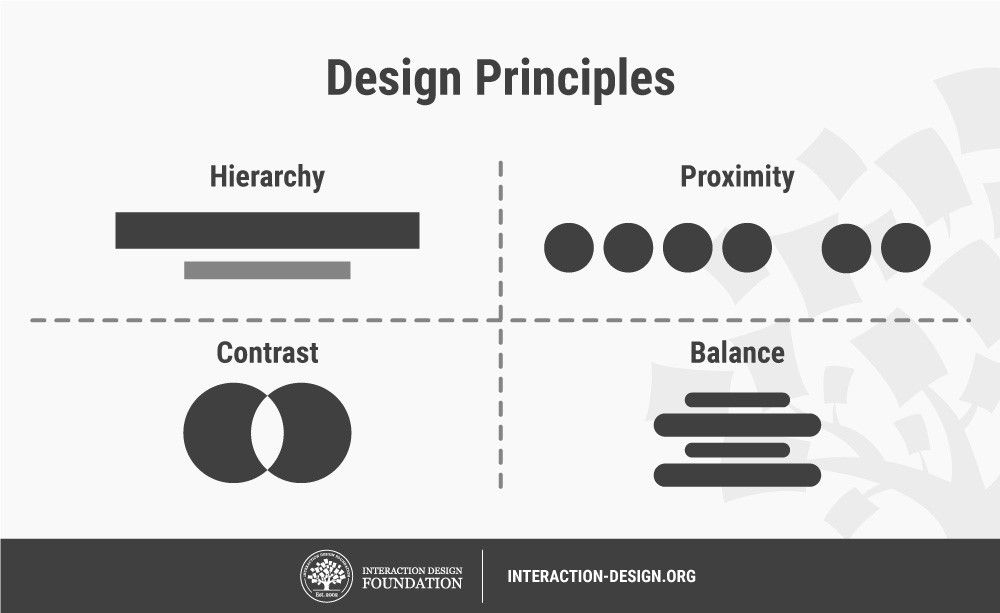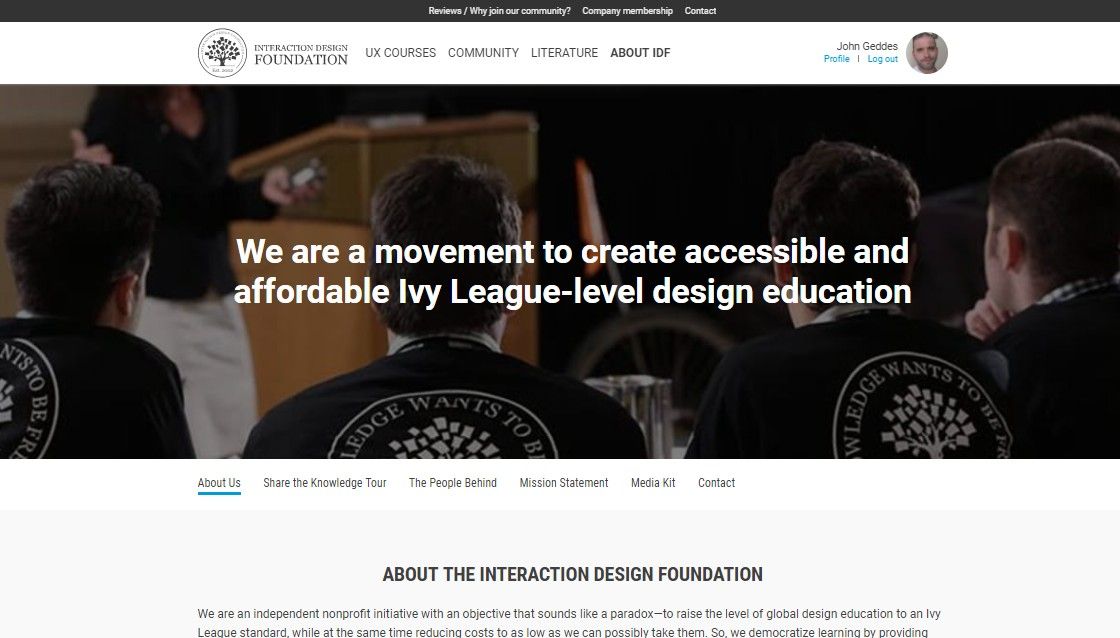How Do Artists Use the Principles of Design
Design principles are widely applicable laws, guidelines, biases and design considerations which designers apply with discretion. Professionals from many disciplines—e.g., behavioral science, sociology, physics and ergonomics—provided the foundation for design principles via their accumulated knowledge and experience.
Design Principles – Laws with Leeway
Design principles are f undamental pieces of advice for you to make easy-to-use, pleasurable designs. You apply them when you select, create and organize elements and features in your work. Design principles represent the accumulated wisdom of researchers and practitioners in design and related fields. When you apply them, you can predict how users will likely react to your design. "KISS" ("Keep It Simple Stupid") is an example of a principle where you design for non-experts and therefore minimize any confusion your users may experience.
Franks Spillers' design checklist is an example of a set of customized design principles for mobile user experience (UX) design.
In user experience (UX) design, it ' s vital to minimize users ' cognitive loads and decision-making time. The authors of the definitive work Universal Principles of Design state design principles should help designers find ways to improve usability, influence perception, increase appeal, teach users and make effective design decisions in projects. To apply design principles effectively, you need a strong grasp of users ' problems and a good eye for how users will accept your solutions. For instance, you don't automatically use a 3:1 header-to-text weight ratio to abide by the principle of good hierarchy. That ratio is a standard rule. Instead, a guideline you might use to implement good hierarchy is " text should be easy to read ". You should use discretion whenever you apply design principles, to anticipate users ' needs – e.g., you judge how to guide the user's eye using symmetry or asymmetry. Consequently, you adapt the principles to each case and build solid experience as you address users ' needs over time.
"Design is not a monologue; it's a conversation."—Whitney Hess, Empathy coach and UX design consultant

Types of Design Principles
Designers use principles such as visibility, findability and learnability to address basic human behaviors. We use some design principles to guide actions. Perceived affordances such as buttons are an example. That way, we put users in control in seamless experiences.
Usability kingpin Jakob Nielsen identified ten "commandments":
- Keep users informed of system status with constant feedback.
- Set information in a logical, natural order.
- Ensure users can easily undo/redo actions.
- Maintain consistent standards so users know what to do next without having to learn new toolsets.
- Prevent errors if possible; wherever you can't do this, warn users before they commit to actions.
- Don't make users remember information – keep options, etc. visible.
- Make systems flexible so novices and experts can choose to do more or less on them.
- Design with aesthetics and minimalism in mind – don't clutter with unnecessary items.
- Provide plain-language error messages to pinpoint problems and likely solutions.
- Offer easy-to-search troubleshooting resources, if needed.
Empathy expert Whitney Hess adds:
1. Don't interrupt or give users obstacles – make obvious pathways which offer an easy ride.
2. Offer few options – don't hinder users with nice-to-haves; give them needed alternatives instead.
3. Reduce distractions – let users perform tasks consecutively, not simultaneously.
4. Cluster related objects together.
5. Have an easy-to-scan visual hierarchy that reflects users' needs, with commonly used items handily available.
6. Make things easy to find.
7. Show users where they've come from and where they're headed with signposts/cues.
8. Provide context – show how everything interconnects.
9. Avoid jargon.
10. Make designs efficient and streamlined.
11. Use defaults wisely – when you offer predetermined, well-considered options, you help minimize users' decisions and increase efficiency.
12. Don't delay users – ensure quick interface responses.
13. Focus on emotion – pleasure of use is as vital as ease of use; arouse users' passion to increase engagement.
14. Use "less is more" – make everything count in the design. If functional and aesthetic elements don't add to the user experience, forget them.
15. Be consistent with navigational mechanisms, organizational structure, etc., to make a stable, reliable and predictable design.
16. Create a good first impression.
17. Be trustworthy and credible – identify yourself through your design to assure users and eliminate uncertainty.

Our 'About' page exemplifies good hierarchy, ease of navigation, whitespace use, etc., while establishing trust.
Learn More about Design Principles
The Interaction Design Foundation has courses on using Design Principles effectively: https://www.interaction-design.org/courses
Whitney Hess examines Design Principles here:https://uxmag.com/articles/guiding-principles-for-ux-designers
An insightful, example-laced look into Design Principles: https://www.smashingmagazine.com/2018/01/universal-principles-ux-design/
A helpful piece addressing Design Principles' importance in mobile experiences: https://uxplanet.org/mobile-ux-design-key-principles-dee1a632f9e6
How Do Artists Use the Principles of Design
Source: https://www.interaction-design.org/literature/topics/design-principles
0 Response to "How Do Artists Use the Principles of Design"
Post a Comment